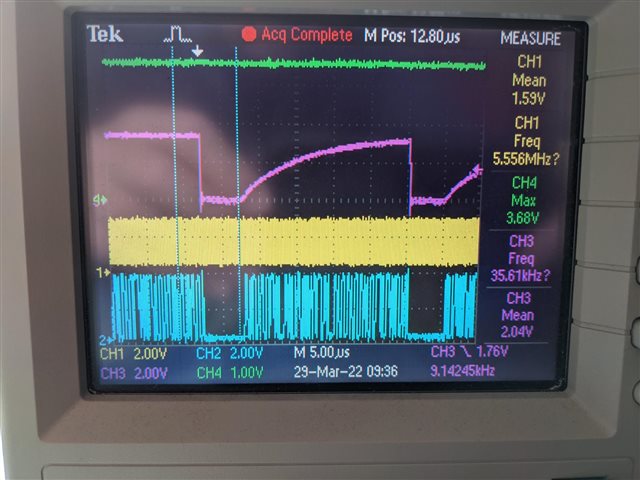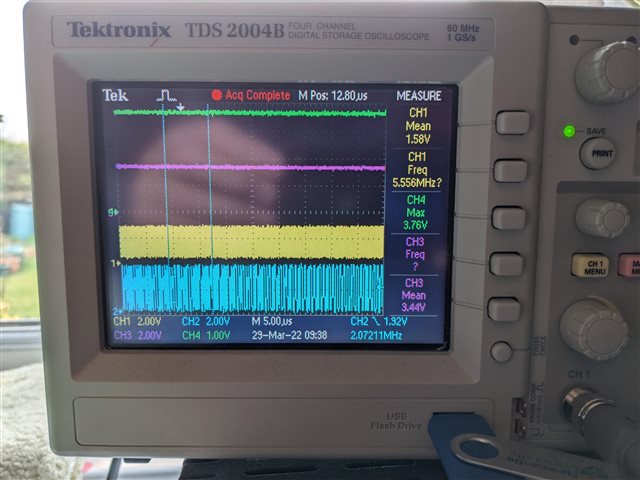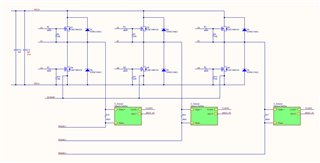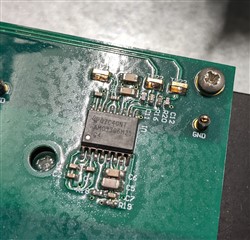Hello,
I have three of these devices configured as per your datasheet with a clk input of 5 to 5.6MHz and a VDD of 3.4V. (I tried increasing the clock frequency from 5 to 5.6 MHz to ensure being at the low end of the data sheet value was not causing this issue)
My circuit is:
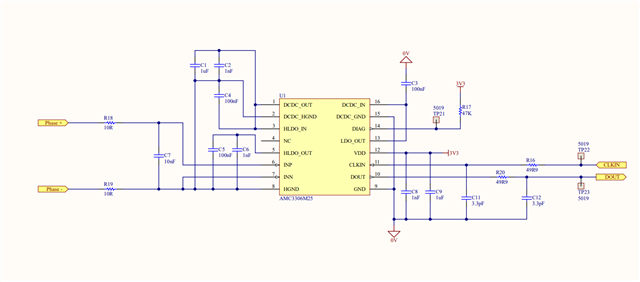
Which is copied from the datasheet and is in a circuit similar to the one shown in the datasheet, but currently operating with no High voltage circuits operational.

For some reason, one of the three is working just fine and sending a steady pulse stream which can be read by the microprocessor, the other two are periodically triggering the diag pin and sending a stream of zeros every now and again. This seems to be every few seconds as captured below:
top trace is the diag pin, middle is the clk signal and bottom is the data.
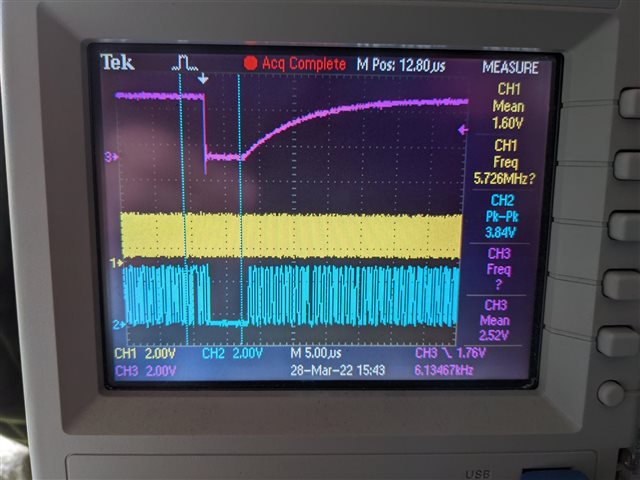
So, according to the datasheet this suggests there is some issue with the high side dc/dc circuit on these two devices.
Assuming my circuit components are as per the above diagram, this would seem to suggest two out of the three devices may be faulty? Are there any other conditions or do you have any suggestions as to what might be causing the this Diag pin to be sporadically triggered? Or is it just a case of swapping out the devices?
regards
Steve


